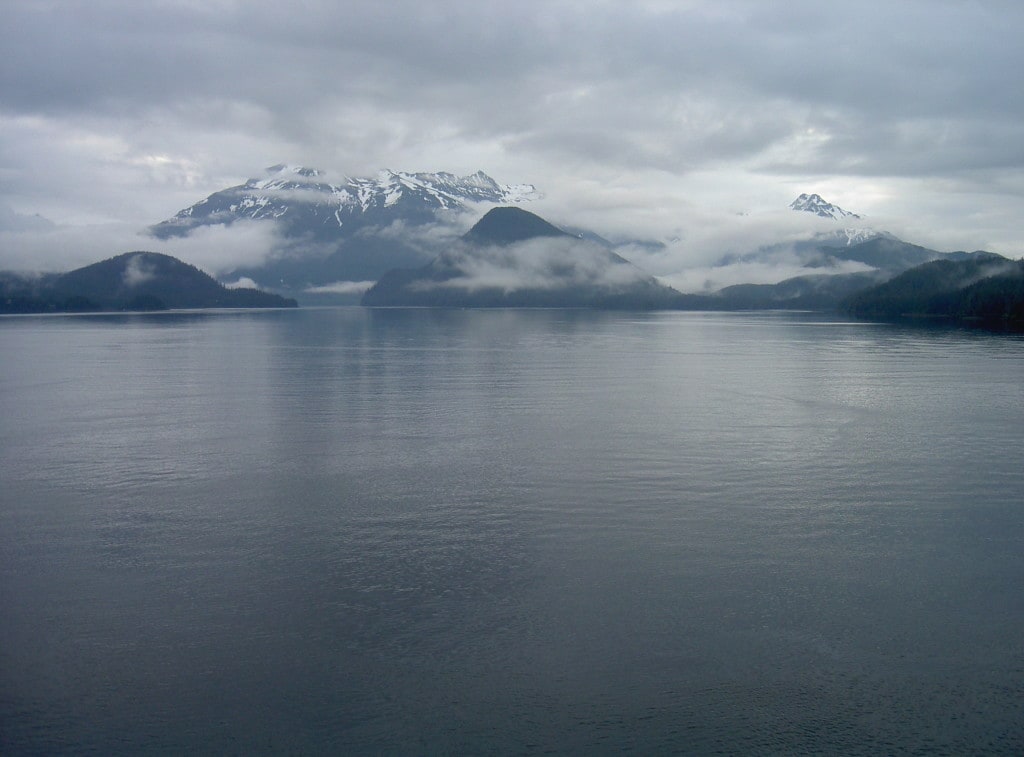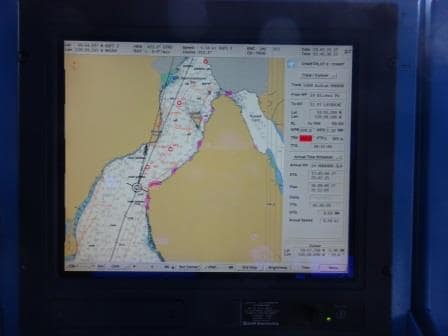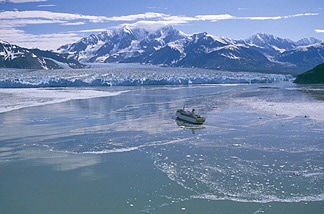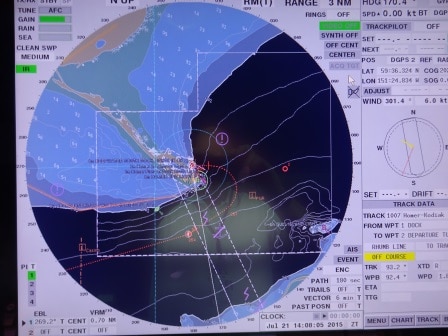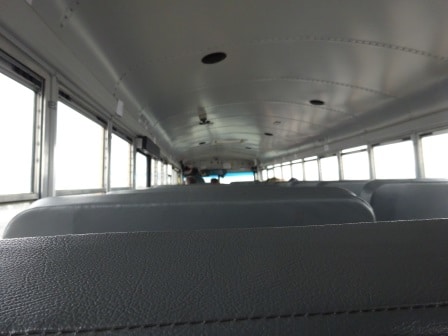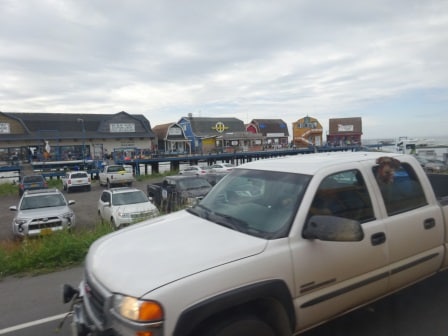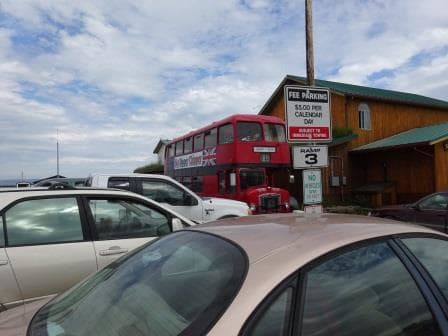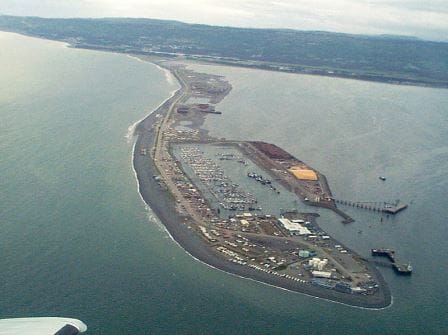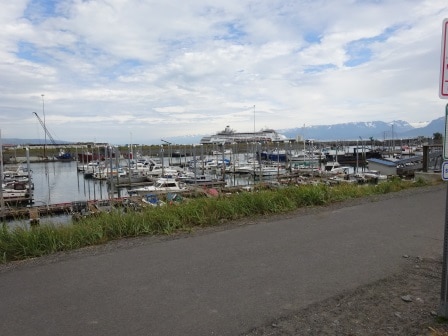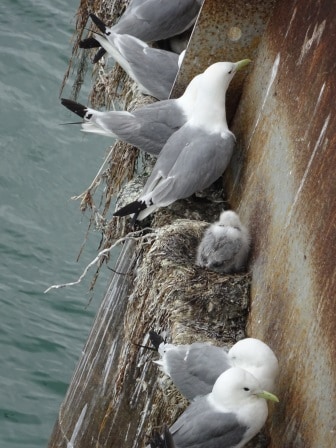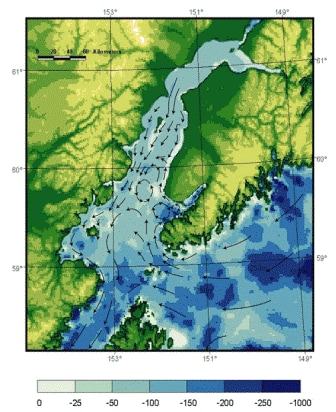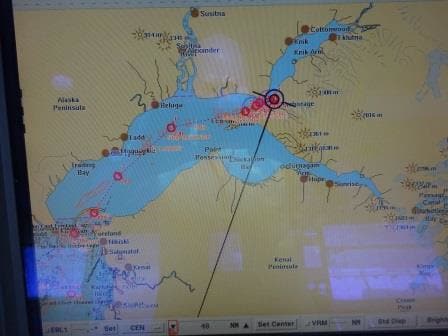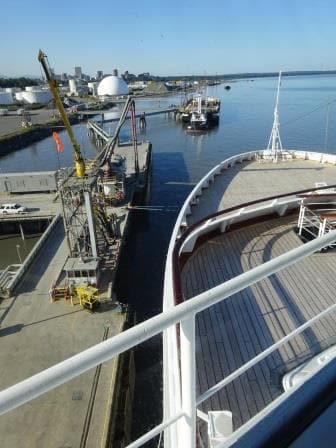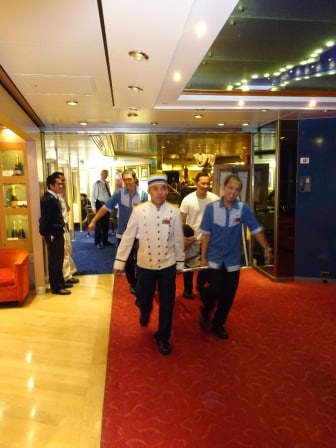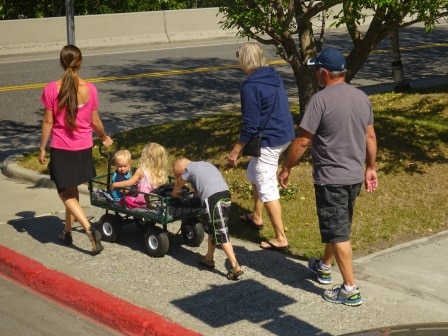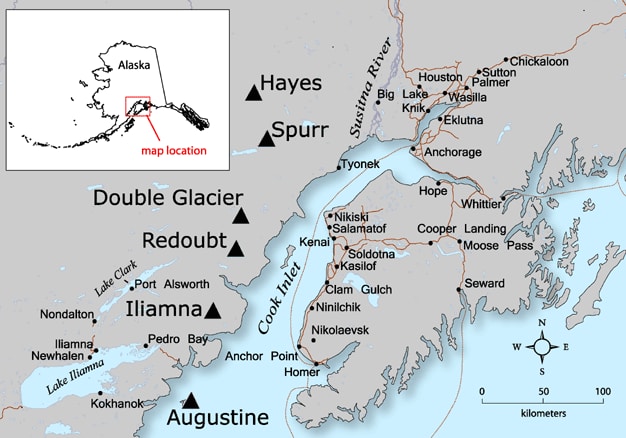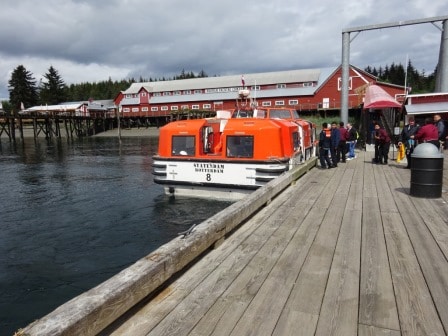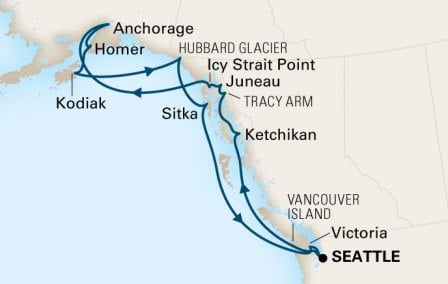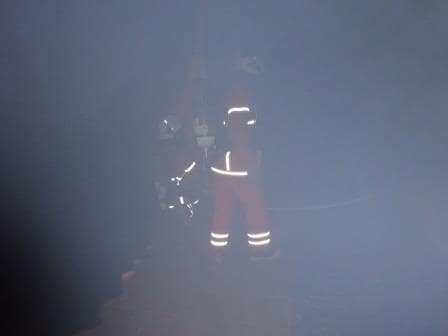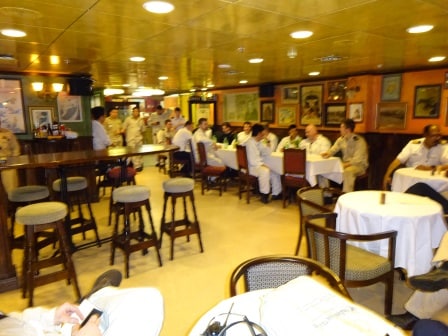After a bit of a wobbly night the Statendam arrived in Sitka. Being the only larger ship in port it could anchor on the nearest deep water anchorage, reducing the tender distance considerably. I have been there with 3 ships at anchor in the past and the furthest one out was looking at a tender distance of nearly 25 minutes. Not fun, but nothing you could really do about it.
When we arrived the weather was as I predicted misty mountain weather, low clouds between the mountains and looking quite gloomy. However it turned out that it was the last end of the weather system and in the course of the morning the sun came out and it turned into a real summer’s day. The guests were very lucky here and it showed as most of them came back to the ship quite late in the afternoon. In the late afternoon even Mount Edgecombe came out of the clouds. Mount Edgecombe is a dormant volcano which dominates the area and is located at the entrance to Sitka. On the way in and on the way out you have to sail by it.
About 30 years ago, a group of what was assumed locals, dropped a lot of car tires in the cone of the mountain and on April 1st. set it on fire as it was April Fool’s day. Well it was a good joke as a lot of people took it seriously and thought that the mountain had come to life again. As far as I know, the pranksters were never found. They say the tires were brought to the mountain cone by helicopter which flew up and down on the sea side so nobody in the town had any suspicion. Must have been costly to do but the prank made quite an impact. Today I did not see any smoke and thus Mount Edgecombe was still in deep sleep.
Although not everybody realizes it, Alaska is full of active volcanoes but as most of them are located in very remote areas they do not threaten the population very much. They are located on the same fault line as Mount St. Helens which of course did have an impact on the local area. When that volcano erupted, I was on a ship called the Incotrans Spirit as a cadet. This was a container ship which was owned by the company that had bought the Holland America Line cargo division in 1973. We had just left Portland Oregon and were on our way to Seattle when the bang came. When we heard that part of the Columbia River had filled with debris and was not navigational any more, the captain was not a very happy man. ……………3 weeks in port or longer would not have good for business. The four cadets, including me, had different thoughts as three weeks of fun in Portland was something we would not have minded at all. One of us said so to the captain and he was then tasked to hose down the whole ship of the ash that had come down during the night. Volcanic ash tends to be a bit sticky and my dear colleague spent a lot more hours than he had initially thought on hosing down all the containers and the decks. We did not see the eruption but we did hear the bang, even while being 10 to 20 miles out at sea.
Later on I sailed on the Columbia River again with the ss Rotterdam (V) but as the Crater wall broke at the North side, there was not much to see from the river side. When I told the captain that the river had been closed for deep sea traffic, he did not want to believe me as the mountain itself is quite a distance away from the river. So I had to get the books out and show it to him. Being the captain as he was, the conclusion was for him not ever to doubt me any more as I seemed to have proof for everything. Later on that gave me a lot of work, as every time he had a question or a query, I was called for to present the undisputed answer. It gave me a while the nickname: $@$#@$# – librarian on board. Which I considered more of a compliment than to be upset about.
As promised by the Captain, the Statendam stayed an hour longer and everybody had the chance to enjoy a real sunny day. Sitka still has several remnants of the Russian days in Alaska and that heritage makes it a nice change from the other ports.
Tomorrow we are at sea, sailing down the coast of Vancouver Island and heading for Victoria where we will arrive around noon time the day after tomorrow. The weather is going to be “changeable” which means it can go either way. So we will just wait and see. Maybe rain, maybe not.
